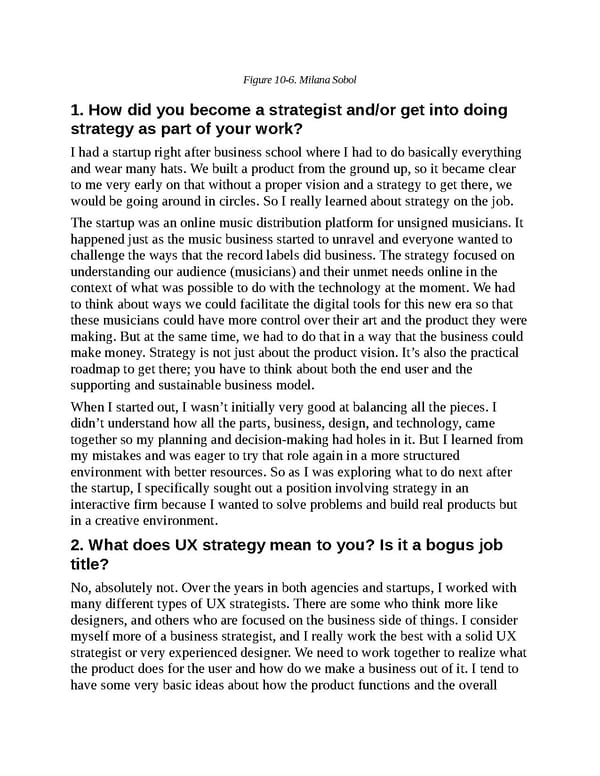Figure 10-6. Milana Sobol 1. How did you become a strategist and/or get into doing strategy as part of your work? I had a startup right after business school where I had to do basically everything and wear many hats. We built a product from the ground up, so it became clear to me very early on that without a proper vision and a strategy to get there, we would be going around in circles. So I really learned about strategy on the job. The startup was an online music distribution platform for unsigned musicians. It happened just as the music business started to unravel and everyone wanted to challenge the ways that the record labels did business. The strategy focused on understanding our audience (musicians) and their unmet needs online in the context of what was possible to do with the technology at the moment. We had to think about ways we could facilitate the digital tools for this new era so that these musicians could have more control over their art and the product they were making. But at the same time, we had to do that in a way that the business could make money. Strategy is not just about the product vision. It’s also the practical roadmap to get there; you have to think about both the end user and the supporting and sustainable business model. When I started out, I wasn’t initially very good at balancing all the pieces. I didn’t understand how all the parts, business, design, and technology, came together so my planning and decision-making had holes in it. But I learned from my mistakes and was eager to try that role again in a more structured environment with better resources. So as I was exploring what to do next after the startup, I specifically sought out a position involving strategy in an interactive firm because I wanted to solve problems and build real products but in a creative environment. 2. What does UX strategy mean to you? Is it a bogus job title? No, absolutely not. Over the years in both agencies and startups, I worked with many different types of UX strategists. There are some who think more like designers, and others who are focused on the business side of things. I consider myself more of a business strategist, and I really work the best with a solid UX strategist or very experienced designer. We need to work together to realize what the product does for the user and how do we make a business out of it. I tend to have some very basic ideas about how the product functions and the overall
 UX Strategy: How to Devise Innovative Digital Products that People Want Page 301 Page 303
UX Strategy: How to Devise Innovative Digital Products that People Want Page 301 Page 303